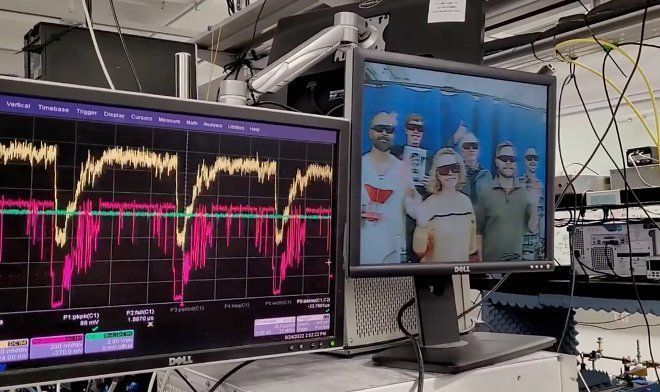Atomic television technology will revolutionize electronics
Atomic television technology will revolutionize electronics
Researchers at the U.S. National Institute of Standards and Technology have developed and demonstrated a technology for transmitting real-time video signals through a cloud of “strange atoms.” They called it “atomic television”; with further development, it has a real chance of displacing electronics based on signal transmission via electric current or radio waves. The current prototype successfully transmits any video signal, including streaming video and video game broadcasts.
The heart of the setup is a cloud of rubidium atoms inside a glass vessel. Scientists converted the atoms into a “Rydberg” state by exposing them to lasers of different wavelengths. The electrons moved into distant orbits, the atoms received high energy levels, and they became sensitive to the electromagnetic field. Now, when a radio signal is sent from one side of the container, it is successfully transmitted through the change in energy of the atoms to the receiver on the other side.
In the next stage, scientists replaced the stable radio signal with a modulated one, the source of which was an ordinary video camera. Such signal forces atoms to change their energy parameters, which allowed to encode and transmit with their help the necessary information. The output signal is transformed through an analog-digital converter into VGI format and fed to an ordinary TV set.
The “atomic TV” prototype has an excellent data transfer rate of 100 MB/sec, but the resolution leaves much to be desired: it is still only 480i. Scientists hope to remedy the situation by finer manipulation of atomic energy, but this requires more research. The main advantage of such signal transmission is that the cloud of atoms can be “packed” in a very small space, plus it is resistant to interference much more than modern electronics.
